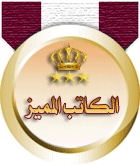حناني ميــــــا الإدارة العامة

معلومات إضافية
الأوسمة :   المشاركات : المشاركات : 24061  نقاط : نقاط : 219330  التقييم : التقييم : 15 العمر : 82
 |  موضوع: Apr. 04, 2016 Brief History of the Chaldean Church in Mesopotamia Sam Gammo Christian tradition attributes genera موضوع: Apr. 04, 2016 Brief History of the Chaldean Church in Mesopotamia Sam Gammo Christian tradition attributes genera  الأربعاء 6 أبريل 2016 - 1:56 الأربعاء 6 أبريل 2016 - 1:56 | |
| | Apr. 04, 2016 | | Brief History of the Chaldean Church in Mesopotamia |
| | | Sam Gammo
- اقتباس :
- Christian tradition attributes generalization of Mesopotamia to the apostles Saint Thomas and Addai (Thaddaeus) and their pupils Mari and Aggai.
By the second century most ancient Chaldean and Jewish communities living in North and South of Babylon as well as the Chaldean Gulf converted from paganism to Christianity who wrote in Aramaic. By the third century there was evidence of an organized community with an Episcopal structure and church buildings. Even in Qatar, Bahrain and Kuwait.
During the fourth century, the land of Mesopotamia witnessed a fierce persecutions of the Christians by the ruling Persians that claimed thousands of lives. Since it lasted forty years it is commonly called ‘The Forty Years Persecution 339-379 AD.
During the fifth century two important synods were convened. The first was convened in 410 AD with the permission of the Persian ruler Yezdegird I, who officially recognized the Christian community and grant them their rights of worship. The second Synod was convened in 424 AD in which the Church within the Persian Empire severed all relations with the Western Church thus becoming self-ruling, with the bishop of the capital as the leader and final judge.
This church was sometimes called The Persian Church, The Nestorian Church or more correctly the Church of the East from its center, the capital of the Persian Empire Seleucia Ctesiphon, the Patriarch sent missions eastwards to Iran, Central Asia, India, China, and southwards to the Arabian Peninsula.
Following the Councils of Ephesus and of Chalcedon, in 431 AD and 451 AD consecutively, a new community emerged in Mesopotamia, ‘The Syrian Orthodox Church’ mainly in areas of Tikrit and Der Mar Mattai. Its leader, the Mephrian, continued to follow the leadership of Antioch and resided in Tikrit. It was recognized as independent community by Persian authorities as in 629 AD.
Both Churches that co-existed within Mesopotamia the Church of the East and the Syrian Orthodox Church were highly cultured and had many centres of learning. Their mainstay was the Syriac language, a dialect of the Aramaic language. Many Chaldean learning centers were established, theology and Biblical studies were taught also languages, history, medicine and other sciences.
Numerous monasteries were built in Mesopotamia from north to south in which learning was also pursued. Some of these monasteries dated to the fourth and fifth centuries and are still functioning, the most famous are the monasteries of Mar Matta, Mar Behnam and Mar Gorges near Mosul and Rabban (Monk) Hurmuz in Alqosh.
After seventh century when the Muslims invaded Mesopotamia the Church of the East had more Christians under its jurisdiction than the western churches It had reached its peak in learning and its members had a near monopoly in subjects like medicine, Greek language and philosophy. Under Umayyad and Abbasid rules the Chaldean Christians in Baghdad were treated badly they had to pay a special tax as a price of their protection since they were not conscripted in the army, and had to follow rules that ensured their treatment as second class citizens. These rules were not always enforced and Christians flourished during the first two centuries of Abbasid rule. Chaldean Christians served as doctors and confidants to generations of Caliphs and were of vital importance to the emergence of their civilization.by translating the philosophical writings of the Greeks to Arabic, they contributed not only in making these works available to Muslim thinkers by assisting in the transmission of knowledge and the creation of lucid Arabic terminology. It is with great sadness that whenever this great history is reviewed it has to be followed by its decline.
From the ninth century onwards the decline of Christian centres such as Tikrit and Seleucia Ctesiphon have disappeared. Isolated and impoverished the Christians retreated to the mountains and was gradual and by the tenth century, were forgotten by the western church until after the crusades.
In 1340, the Nestorian metropolitan Mar Eliya made a Catholic profession of faith, and in 1445, the metropolitan Timothy also converted to Catholicism. Most of the Nestorians of Cyprus followed the example of their bishops. To distinguish these converts from their recalcitrant Nestorian brethren, Pope Eugene IV christened them 'Chaldeans', because they used the Chaldean language.
Contact with the Roman Catholic Church started from the thirteenth century, mainly in the Island of Cyprus to which the crusaders retreated after defeat by the Muslims. Catholic missionary activity led to the emergence of new churches in union with the Roman Catholic Church. The Chaldean Church was the result of union of some members of the Church of the East with Rome, while the Syrian Catholic Church emerged as a result of union of some members of the Syrian Orthodox Church with the Roman Catholic Church. Protestant and Anglican missions also led to few Protestant denominations. During Ottoman rule most of the Christians were in isolated mountainous areas where the Turkish security could not reach them. They led a free life next to Kurdish tribes, while in other areas where they were reached by the ruler they were usually oppressed by most Moslem rulers in the eighteenth century of Ottomans rule there was reorganization with an attempt to give minorities equal rights. Organized scientific and religious missions flooded the area and in Iraq, the Carmelites established themselves in Basra in 1721 and in Baghdad in 1722, while the Dominicans arrived in Mosul in 1750. They opened the first schools and clinics and the Dominicans had the first printing press. During World War I, massacres of Armenian and Christians led many to seek Iraq for refuge thus increasing its Christian population.
After World War I, the modern state of Iraq was established by American and English, Christians were given equal rights and responsibilities to their Muslim brethren. They were conscripted in the army, represented in Parliament and allowed equal access to universities and jobs. They soon excelled in the professions and had prominent roles especially in medicine and journalism. The Christian population was initially concentrated in the north, mainly in Mosul and its surrounding villages. With the increasing importance of the capital, the Patriarch of the Chaldeans moved his residence to Baghdad and so did many Christian families. Following the 1958 revolution, conflicts in Mosul and Kurdistan caused displacement of the Christians to the capital..
Following the lack of law and order that followed the occupation of Iraq in 2003, Muslim fundamentalist groups started to target Christians calling them infidels and crusaders. Christians have experienced violence from both the Sunni and Shia extremist groups enforcing the hijab, kidnapping, raping, killings and evictions. Churches have been destroyed, crosses removed from their domes and bishop, priests abducted and slaughtered. The district of al-Dora which used to be called the “Vatican of Iraq” in view of the presence of two Basilicas, a seminary and the theological college of Babylon, have been emptied of its Christians, the churches closed and the seminary and college relocated to Ankawa near Arbil.
|
|
| |
|
لطفي الياسيني  معلومات إضافية
الأوسمة :   المشاركات : المشاركات : 80306  نقاط : نقاط : 715277  التقييم : التقييم : 313 العمر : 118  |  موضوع: رد: Apr. 04, 2016 Brief History of the Chaldean Church in Mesopotamia Sam Gammo Christian tradition attributes genera موضوع: رد: Apr. 04, 2016 Brief History of the Chaldean Church in Mesopotamia Sam Gammo Christian tradition attributes genera  الأربعاء 6 أبريل 2016 - 6:14 الأربعاء 6 أبريل 2016 - 6:14 | |
| | |
|








 المشاركات
المشاركات نقاط
نقاط التقييم
التقييم











